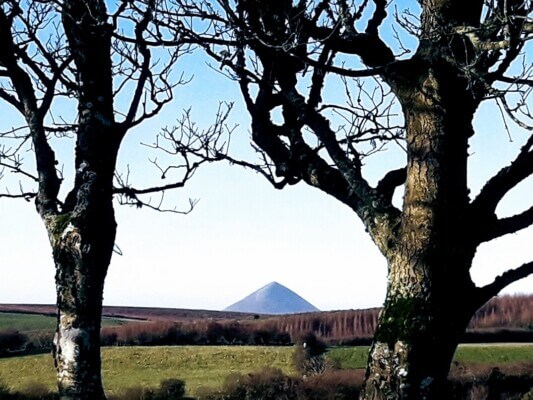Like countless children growing up in rural Ireland at one time, County Mayo author Michael Larkin remembers the joy and excitement of welcoming home his American relatives to the old homestead.
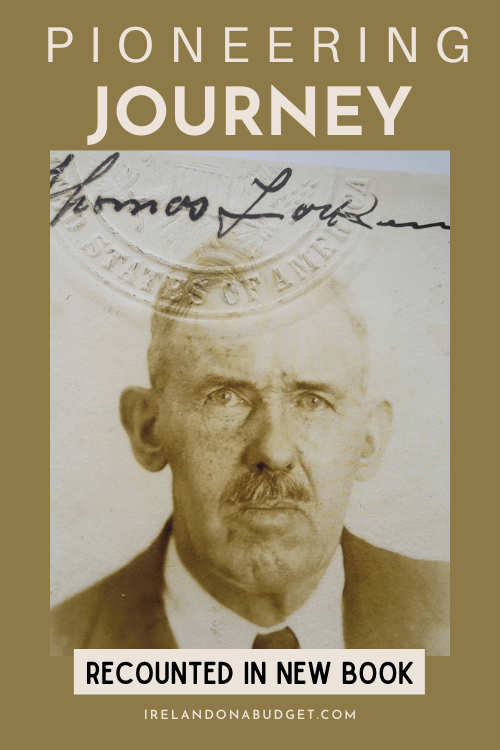 This post and page contain affiliate links and I may earn compensation when you click on the links at no additional cost to you.
This post and page contain affiliate links and I may earn compensation when you click on the links at no additional cost to you.
For a child who wasn’t interested in the chit-chat that often resulted when relatives arrived from America, the visit was a chance, more importantly, to get some coveted American candy, or if he was lucky, a branded American t-shirt or a Wild West storybook.
On such occasions, his mother would take out the fine “delph” and stainless-steel cutlery for the special guests and lay them out in the “front room.”
Over tea and cake, the guests would ask questions about the farm and the discussion would invariably lead to stories about his granduncle and their relative, Thomas Larkin.
Larkin was one of the early Telephone Pioneers of America with the Bell Telephone Company of Pennsylvania who had left the small village of Derrew, Co. Mayo, in 1898.
By the time Michael was a young boy, his granduncle had long gone, but the memory of him was still fresh in the Larkin household.
The front room included a number of interesting mementos to the great pioneering immigrant.
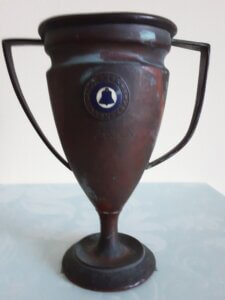
They included his American passport, a framed picture of the Bell Telephone Company certificate he received as a lifetime member of the Telephone Pioneers of America, as well as the engraved copper cup that the company gave him in recognition of his unblemished record as a dedicated employee.
The Idea for a Book Emerges
It wasn’t until Michael Larkin was much older and at a time when he actually wished he had paid more attention to the family folklore surrounding his granduncle that he decided to write a hardcover book titled, “Making the Right Connections.”
His intention was to create a book that would encompass at least some of the handed-down information and stories told over and over again relating to this man's time as one of the early Telephone Pioneers of America.
“Listening to those stories about an old man who spent a lifetime in America meant very little at the time to a young Michael Larkin who believed that a modern black-and-white TV, a cassette tape-recorder or a transistor radio were much cooler as opposed to stuff from the distant past,” he recalled.
But realizing that time has a way of erasing the memory of the spoken word and looking at the tarnished memories of Thomas Larkin were enough to get him researching and eventually writing a very interesting and captivating tale of his granduncle’s enterprising journey, from a lineman to a senior management role.
Larkin’s deep interest in the relationship between Ireland and the United States was the thing that kept him going as he embarked on a literary journey that took him from Derrew, where his granduncle was born in 1874 and where his ancestors were also evicted.
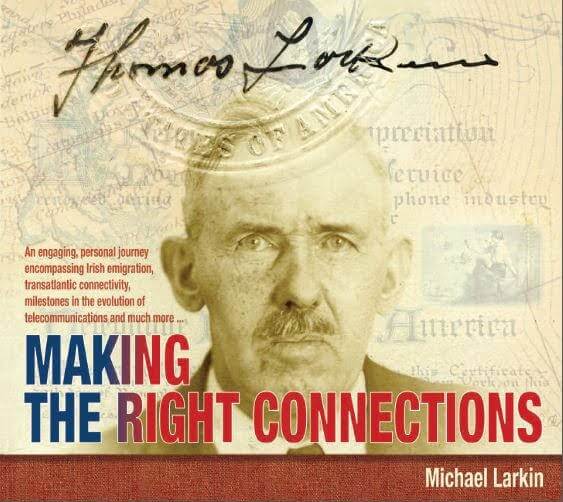
In particular, he was interested in the connection with Pittsburgh, where Thomas Larkin spent most of his distinguished career, in Denver, the home of today's Telephone Pioneers of America headquarters, and in Cleveland and Seattle, as well as New York, where the certificate conferring life membership of the Telephone Pioneers of America was presented to Thomas Larkin at a prestigious ceremony in the AT&T Headquarters.
He was also interested in the connection with Boston, where Alexander G. Bell invented the telephone on March 10th, 1876.
An Immigrant’s Visionary Attitude
Larkin’s book isn’t just another recounting of a relative’s success in America.
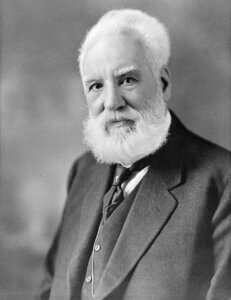
It also speaks to the visionary attitude that both his granduncle and Bell both possessed
Of course, Bell is by the far the more famous one for inventing the telephone, stating confidently at one time, “the day is coming when telephone wires will be connected to houses, much like water or gas and friends will be able to converse with each other without leaving home.”
But Larkin, who was among those Telephone Pioneers responsible for delivering phone connectivity into America’s Midwest, was wise beyond his years, too.
He is once quoted as saying, “Believe me, the day will come when you will be able to see the person who you are speaking to on the telephone.”
How true both of these quotes are today in our hyper-connected world?
Larkin makes a point early on in his book of comparing the two men, both immigrants, who would each revolutionize our methods of communication.
By clicking on the Amazon link below, I may earn a small commission from the Amazon Associates Program if you decide to buy something on the site. However, you will not incur any additional costs by doing so.
Purchase a County Mayo Football Jersey
Tracing Thomas Larkin’s Story
“Making the Right Connections” is as much about the connections that we all take for granted today, thanks to Bell, as it is about Larkin’s ability to make the right connections on his way up the career ladder in America.
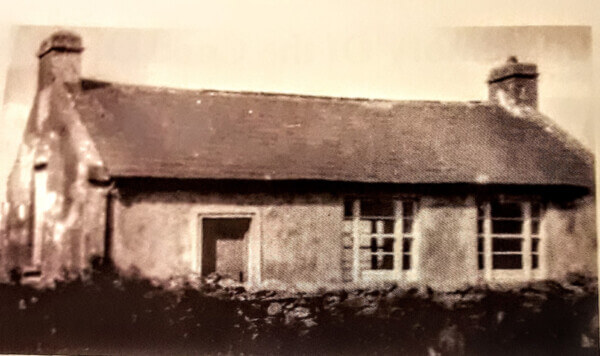
His education at the now derelict, two-roomed Ballyburke National School no doubt served him well, even though his formal education ended at age 12.
Going to England and working in a cotton mill in Lancashire (the same one that land reformer and fellow County Mayo man Michael Davitt was also employed in), and eventually working as a farm manager was instrumental to his success in the U.S.
As you read about Larkin’s last stroll through Westport, about a 20-minute drive from Derrew, you can imagine the sadness the 16-year-old must have felt leaving his homeland for the unknown.
After purchasing a new white shirt, Larkin describes the long train journey that his granduncle took across Ireland's midlands and then by sea to England.
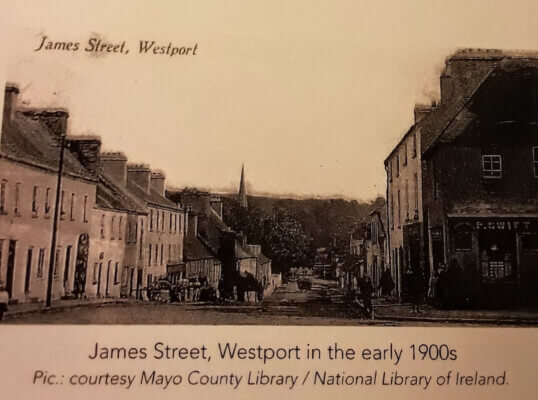
That same kind of descriptive writing appears again when the young Mayo man arrives in Philadelphia and thankfully finds work, eventually landing the job of office clerk because he could read and write, a skill that not every immigrant possessed at the turn of the century.
His journey didn’t end there, of course.
Thomas Larkin’s initial days in Pittsburgh are eye-opening and indicative of the early 1900s in this once industrial powerhouse of a city.
“As my interest in this man’s pioneering journey and his memorabilia grew stronger, yet only knowing that he spent most of his distinguished career in the greater Pittsburgh region, I was determined to go there,’’ recalled Larkin.
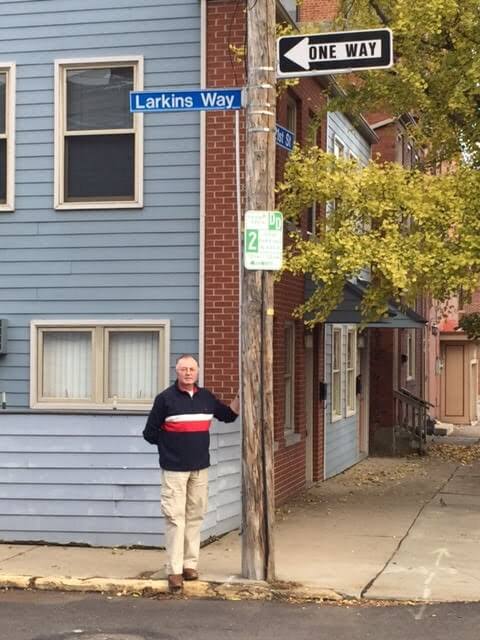
While help from academics and others in the U.S. certainly helped Larkin tell his granduncle’s story, his own independent research was also crucial to the success of the book.
Some of his fondest memories in Pittsburgh include standing in the vast Carnegie Library complex in Pittsburgh, receiving transcripts of his granduncle’s WWI draft registration card, the signed application forms that Thomas Larkin filled out when applying for American citizenship, and then discovering the street numbers and addresses where he lived.
Coming Full Circle Back to Mayo
As he approached the end of his career with the Bell Telephone Company, Thomas Larkin started to ponder and look back on his journey to this point.
More and more he started to reflect on his early years walking and running on narrow laneways and across fields in his native homeland.
Despite having lost contact with ‘home' for many years and having spent a lifetime ‘in America,' he eventually did return home in 1930.
This is of course an unusual turn of events for an immigrant.
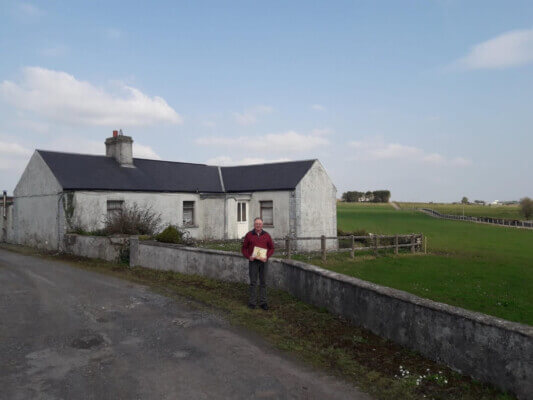
Most never returned to Ireland, and indeed many had families and were either unable to make the journey back or simply got too busy with their new lives to do so.
Discovering that little had changed in 1930s Ireland, Larkin contemplated returning to the United States, but that never happened.
He slowly immersed himself in rural life again, living in what was considered the “new house,” which was built in 1911 with stones from the original thatched cottage that he grew up in.

Larkin busied himself with farm chores like saving the hay, harvesting corn and building stone walls around his home.
However, his colleagues at the telephone company never forgot him and they kept in regular contact with the lifetime bachelor right up until his death in 1953.
Fiber Optic Connectivity
Larkin said that his granduncle wouldn’t be surprised at all by today’s advances in technology given his visionary nature.
The fact that a 3,400-mile (5,471-km) fiber optic cable starts on America’s East Coast and ends up in Killala, Co. Mayo, has not gone unnoticed by many in recognizing this continuing connection between Ireland and America.
In fact, Michael Larkin was invited by the Ireland-US council to display some of Thomas Larkin's memorabilia at one of their events, following the completion of the transatlantic fiber optic cable project in 2015.
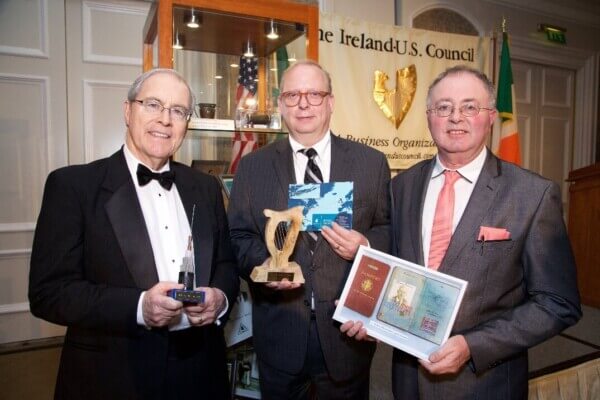
At the event, titled, “Ireland/USA Connectivity – Past, Present, and Future,” special guests including the former United States Ambassador to Ireland Kevin O’Malley and Greg Varisco, CEO of Aqua Comms, the company that laid the subsea cable all the way to the shores of County Mayo.
The event highlighted Thomas Larkin's memorabilia alongside a sample of the ultra-modern fiber optic cable that symbolized Irish American connectivity past and present.
In a world that feels like it moves at the speed of light, Larkin said that it is easy to forget where all of that connectivity began.
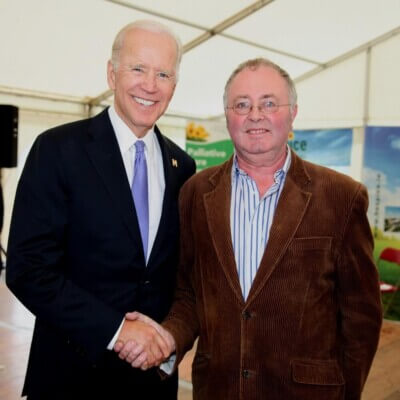
“I hope the story and its interwoven themes relating to emigration, transatlantic connectivity, and the evolution of telecommunications helps to foster and preserve this very special connection between Ireland and the United States of America,” said Larkin.
Given the changes that have been forced on society due to the year-long pandemic, Larkin said that connectedness is more important now than ever.
“A virtual hug or handshake will never replace face-to-face interaction, the spoken word, or perhaps even the sound of a human voice over the telephone,” he said.
The hardcover book is published by Bookhub Publishing and is available from the publishers, www.bookhubpublishing.com, or from Mayo Books at www.mayobooks.ie.
Are your ancestors from County Mayo? Let me know in the comments below.
Read More: Anniversary of Alexander Bell's Death Remembered by Mayo Author

